Access Control: Comparison between QR Code, Card and Face ID
Security in environments such as companies, condominiums and events is a priority. With the evolution of technology, several security options have emerged access control, each with its own advantages and disadvantages. In this article, we will compare three of the main technologies currently used: QR Code, Magnetic Card and Face ID (Facial Recognition), to help you choose the best solution for your space.
1. Access Control by QR Code
THE access control QR Code is a modern solution that uses codes generated on your cell phone to allow entry into restricted areas. The user presents the code at the entrance, which is scanned by a reader to grant access.
Advantages of QR Code
- Ease of use: The user only needs to present the code generated on the cell phone.
- Remote access: Can be generated and sent remotely, ideal for visitors.
- Low cost: Does not require physical cards or expensive biometric devices.
- Traceability: Allows you to monitor who entered and left in real time.
Disadvantages of QR Code
- Moderate security: Codes can be shared or copied.
- Mobile device dependency: Requires the user to have a working smartphone.
2. Magnetic Card Access Control
THE magnetic card It is one of the most traditional solutions for access control. Each person receives an individual card that must be held close to a reader to allow entry.
Advantages of Magnetic Card
- Affordable cost: The system is relatively inexpensive to implement.
- Simplicity: Easy to use, just bring the card close to the reader.
Disadvantages of Magnetic Card
- Loss or theft: Cards can be lost or stolen, compromising security.
- Cloning: There is a risk of card cloning, although it is rare.
- Physical maintenance: The card may wear out over time.
3. Access Control by Face ID (Facial Recognition)
Facial recognition uses cameras and advanced algorithms to identify the unique features of each person’s face. It is a contactless and highly secure solution.
Advantages of Face ID
- High security: Difficult to fake as it uses unique facial features.
- No physical contact: Ideal in times of pandemic or in environments where hygiene is crucial.
- Speed and precision: Fast identification with high hit rate.
Disadvantages of Face ID
- High cost: Equipment and software are more expensive compared to other technologies.
- Technical maintenance: May require specialist maintenance.
- Environmental conditions: May have difficulty in low-light environments or with users wearing masks.
Direct Comparison between QR Code, Magnetic Card and Face ID
| Feature | QR Code | Magnetic Card | Face ID (Facial Recognition) |
|---|---|---|---|
| Cost | Low | Average | High |
| Security | Moderate | Average | High |
| Ease of Use | High (via smartphone) | High (physical card) | Very High (no physical contact) |
| Maintenance | Low | Average | High |
| Access Speed | Fast | Fast | Very fast |
| Technological Dependence | Smartphone | Physical card | Cameras and advanced software |
| Counterfeiting Risk | Moderate (code can be copied) | Medium (cloning possible) | Low (unique features) |
Which Technology to Choose?
Choosing the best technology for access control depends on the specific needs of the environment:
- If you are looking for an affordable and easy-to-implement solution, QR Code control may be the best option. It offers practicality and can be managed remotely, making it ideal for temporary events or locations with high visitor turnover.
- For environments that require a balance between cost and security, such as small offices or residential condominiums, magnetic cards are still a good choice. They are easy to use and have a low initial cost.
- Facial recognition (Face ID) is recommended for places that require high security and efficiency, such as large companies, hospitals or government buildings. Although it is more expensive, it offers a higher level of protection and convenience without physical contact.
Integration between Technologies
A growing trend in the market is the integration of these technologies. Many modern systems allow you to combine different methods to further increase security:
- QR Code + Magnetic Card: Ideal for places that receive many temporary visitors. The QR Code can be used for visitors while residents use magnetic cards.
- Magnetic Card + Face ID: To increase security, some systems require both card usage and facial verification before granting access.
- QR Code + Face ID: In corporate environments that receive many external visitors, the QR Code can be used for temporary access while employees use facial recognition.
Conclusion
Each technology has its advantages and disadvantages when it comes to access control. QR Code offers practicality and low cost; magnetic cards are simple and accessible; while facial recognition ensures maximum security without physical contact. The ideal choice depends on the priorities of your environment — be it a residential condominium, a company or a temporary event. If you are looking for advanced access control solutions, contact C2H Solutions! We offer the best technologies in QR Code, magnetic cards and facial recognition to ensure the security of your space. Request a personalized quote now!


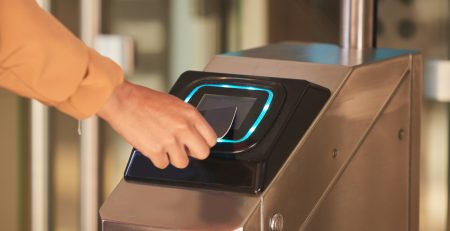
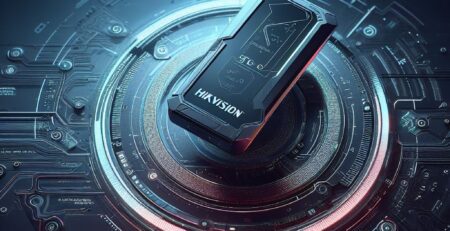
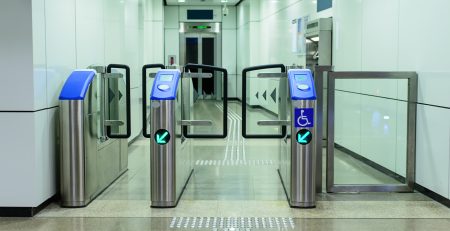


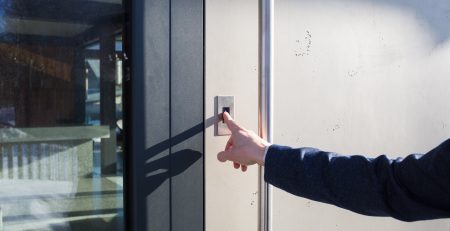
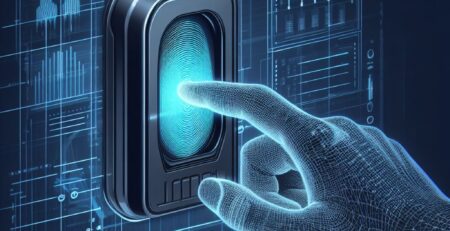

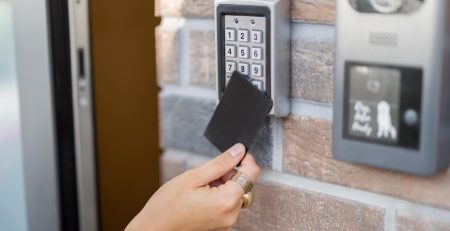

Comments (14)
💡 A tecnologia de controle de acesso está evoluindo rapidamente, e escolher a melhor opção pode fazer toda a diferença na segurança da sua empresa! Que tal descobrir as vantagens de cada método e como implementá-los de forma eficaz?
👉 Quer aprofundar seus conhecimentos sobre #Controle de Acesso? Explore mais conteúdos exclusivos em nosso blog na seção #Controle de Acesso.
🤝 Envie um email para nosso departamento comercial! comercial@c2hsolutions.com.br
💡 O controle de acesso é essencial para garantir a segurança de ambientes, e cada tecnologia tem seus prós e contras. Entender as melhores opções pode fazer toda a diferença!
👉 Quer aprofundar seus conhecimentos sobre #Controle de Acesso? Explore mais conteúdos exclusivos em nosso blog na seção #Controle de Acesso.
🤝 Envie um email para nosso departamento comercial! comercial@c2hsolutions.com.br
💡 A escolha do método de controle de acesso pode impactar significativamente a segurança e a conveniência. Cada tecnologia tem suas vantagens, e entender isso é crucial para decisões assertivas!
👉 Quer aprofundar seus conhecimentos sobre #Controle de Acesso? Explore mais conteúdos exclusivos em nosso blog na seção #Controle de Acesso.
🤝 Envie um email para nosso departamento comercial! comercial@c2hsolutions.com.br
💡 A escolha do método de controle de acesso pode impactar diretamente a segurança e a praticidade do seu ambiente. Cada tecnologia tem suas vantagens, e entender essas nuances é essencial para a proteção eficaz!
👉 Quer aprofundar seus conhecimentos sobre #Controle de Acesso?
Explore mais conteúdos exclusivos em nosso blog na seção #Controle de Acesso.
🤝 Envie um email para nosso departamento comercial! comercial@c2hsolutions.com.br
💡 A escolha entre QR Code, Cartão e Face ID pode impactar não apenas a segurança, mas também a experiência do usuário. Cada tecnologia apresenta vantagens únicas que merecem ser exploradas!
👉 Quer aprofundar seus conhecimentos sobre #Controle de Acesso?
Explore mais conteúdos exclusivos em nosso blog na seção #Controle de Acesso.
🤝 Envie um email para nosso departamento comercial! comercial@c2hsolutions.com.br
💡 A tecnologia de controle de acesso evolui rapidamente, e entender as diferenças entre QR Code, Cartão e Face ID é essencial para a segurança do seu negócio. Cada solução tem suas vantagens e pode se adequar a diferentes necessidades!
👉 Quer aprofundar seus conhecimentos sobre #Controle de Acesso? Explore mais conteúdos exclusivos em nosso blog na seção #Controle de Acesso.
🤝 Envie um email para nosso departamento comercial! comercial@c2hsolutions.com.br
💡 A escolha do método de controle de acesso pode impactar diretamente na segurança e na experiência do usuário. Avaliar as vantagens de cada tecnologia é fundamental para uma decisão assertiva!
👉 Quer aprofundar seus conhecimentos sobre #Controle de Acesso? Explore mais conteúdos exclusivos em nosso blog na seção #Controle de Acesso.
🤝 Entre em contato com nosso departamento comercial pelo email: comercial@c2hsolutions.com.br!
💡 A escolha do método de controle de acesso certo pode transformar a segurança do seu negócio! Cada tecnologia tem suas vantagens e entender isso é essencial para uma decisão informada.
👉 Quer aprofundar seus conhecimentos sobre #Controle de Acesso? Explore mais conteúdos exclusivos em nosso blog na seção #Controle de Acesso.
🤝 Entre em contato com nosso time comercial pelo email: comercial@c2hsolutions.com.br!
#Controle de AcessoControle de Acesso: Comparativo entre QR Code, Cartão e Face ID#Controle de AcessoSegurança com Inovação e Confiabilidade – C2H Solutions
#Controle de AcessoControle de Acesso: Comparativo entre QR Code, Cartão e Face ID#Controle de AcessoSegurança com Inovação e Confiabilidade – C2H Solutions
#Controle de AcessoControle de Acesso: Comparativo entre QR Code, Cartão e Face ID#Controle de AcessoSegurança com Inovação e Confiabilidade – C2H Solutions
#Controle de AcessoControle de Acesso: Comparativo entre QR Code, Cartão e Face ID#Controle de AcessoSegurança com Inovação e Confiabilidade – C2H Solutions
#Controle de AcessoControle de Acesso: Comparativo entre QR Code, Cartão e Face ID#Controle de AcessoSegurança com Inovação e Confiabilidade – C2H Solutions
#Controle de AcessoControle de Acesso: Comparativo entre QR Code, Cartão e Face ID#Controle de AcessoSegurança com Inovação e Confiabilidade – C2H Solutions